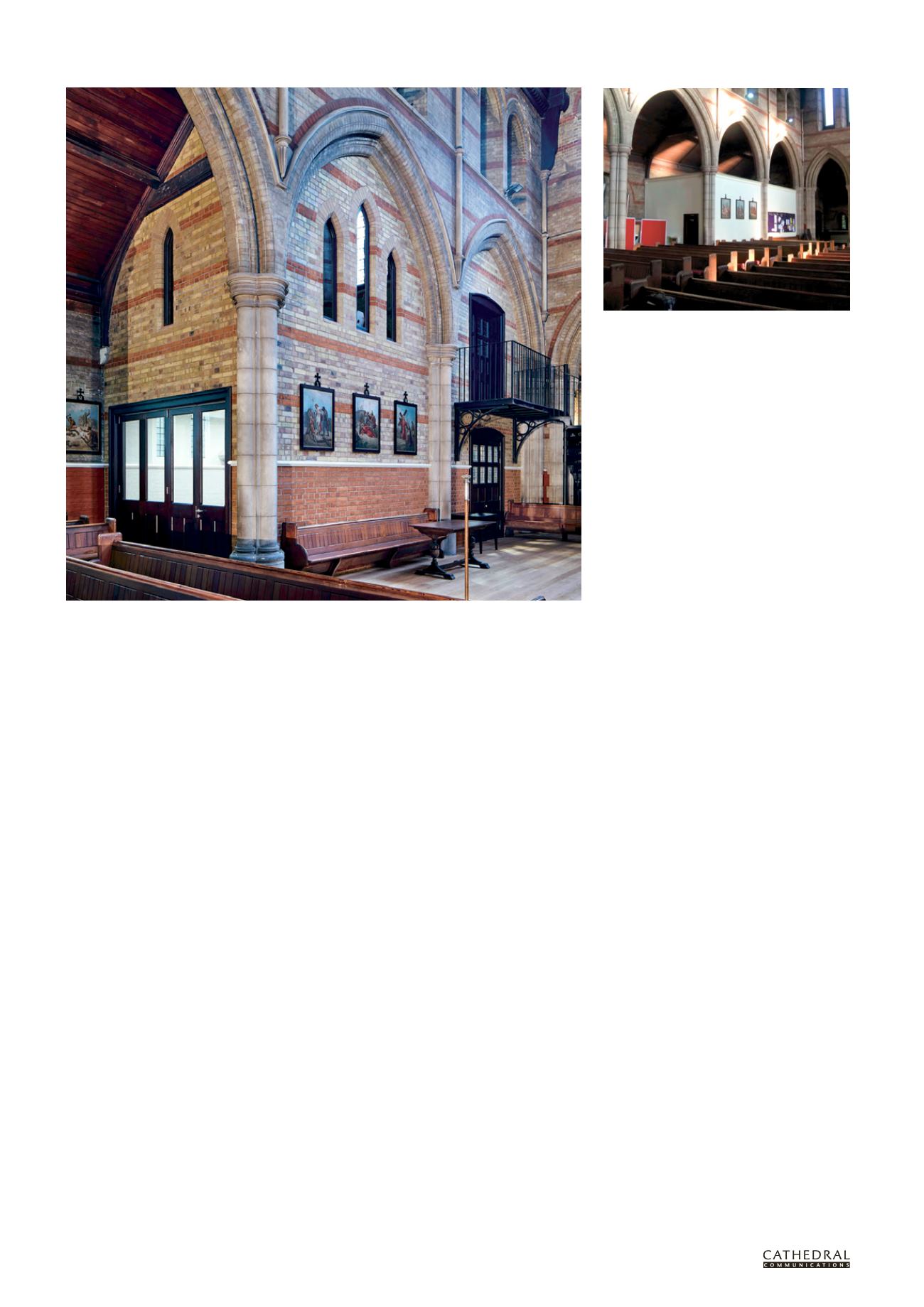

8
BCD SPECIAL REPORT ON
HISTORIC CHURCHES
24
TH ANNUAL EDITION
space had increased dramatically, and
having the right spaces and facilities
had become increasingly important to
fulfilling Emmanuel’s vision of its role in
the community.
In 2007, the Reverend Professor
Peter Galloway, who was then the
priest in charge, instructed the
church’s architects to provide options
for repairing the uneven main floor
to make all areas of the church floor
safe and accessible. Responding to the
increase in demand from local groups
for spaces to hire, it was also suggested
that extra community rooms within
the nave and aisles might be added as
the existing facilities could not keep up
with demand. In line with the increase
in meeting room space, the kitchen
and toilet facilities required updating
to include a new accessible toilet and
level access from the entrance porches.
Proposals halted when Peter
Galloway sadly passed away in 2008,
but discussions started again with
great fervour in late 2009, under
instruction from the Reverend Jonathan
Kester, the new priest in charge.
STRUCTURAL ISSUES
One of the main items noted by DIA
in earlier quinquennial inspection
reports was the structural movement
of the floor in the main body of
the church. By the time the project
restarted, parts of the parquet floor had
become so buckled that level changes
of around 100mm were evident in
various parts of the church, causing
trip hazards and limiting their use.
Although Emmanuel Church has
been kept in reasonable condition since
it was constructed, it has a history of
structural movement. Underpinning
and structural restraint ties were
required at the east end of the church
following dry summers in the 1920s
and bombing during the second world
war had caused cracks to the north
aisle which were repaired in 1953.
The church had also experienced
movement in the north nave arcade in
the west end of the church following
a dry summer in the mid-1990s.
Given the history of structural
movement caused by the soft clay
on which the church is built, Stuart
Tappin of Stand Consulting Engineers
arranged soil investigations in early
2010 and provided structural advice for
proposals to rectify the uneven floor. The
conclusion was that the best solution
was to remove the existing floor slab
completely throughout the nave, aisles
and narthex, and to replace it with a
new slab supported on 30 piles over
a void, as this would allow for future
clay movement. In addition, a screed
incorporating underfloor heating was
proposed which would allow the removal
of the wall-mounted perimeter heaters
and provide a more even level of heating.
DESIGN CHALLENGES
The removal of the existing floor slab
meant the existing community room,
which was of a low historic significance,
would need to be dismantled. It was
decided to use the footprint of this
room as a basis for the new proposals.
Installing a further community room
of the same footprint in the opposite
north aisle would not only double
the existing footprint for spaces to
hire, it would also restore balance to
the nave. The remainder of the aisles
were to be left available for parking
prams and buggies, a requirement
during services and for many of the
community room user-groups.
From an enhanced brief on the
requirements of church users, it was
clear that the list of existing patrons was
already extensive. Many other potential
users were also interested in hiring space
but required improved facilities – further
evidence that the maximum number of
new community rooms was necessary.
It was decided to install the new
kitchen and accessible toilet within the
ground floor of the south aisle, leaving
a smaller community room adjacent to
it. The larger kitchen was, among other
aspects of the proposed interventions,
crucial for the future of the church,
not only for providing coffee and tea
following services, but as somewhere
groups hiring the community rooms
could prepare their own refreshments,
as a facility for larger events such as
concerts, and to prepare hot meals as
part of the homeless shelter scheme.
Likewise, the accessible toilet was not
only essential for those in the parish with
The former single storey meeting room to south
aisle, built in 1968 (above) and the new brick-walled
community rooms which replaced it (left)


















